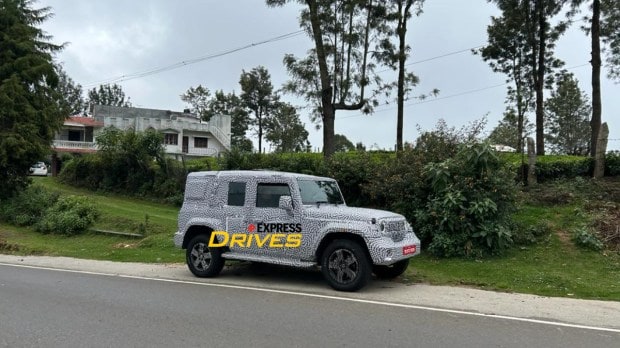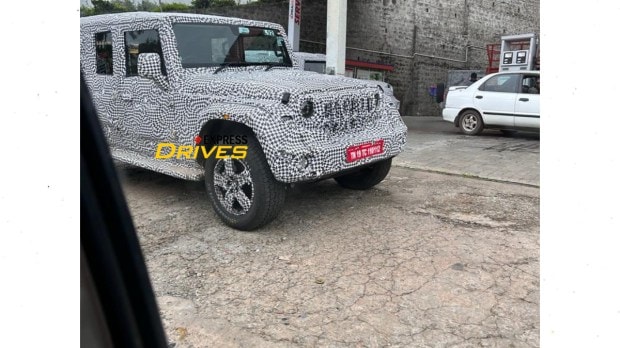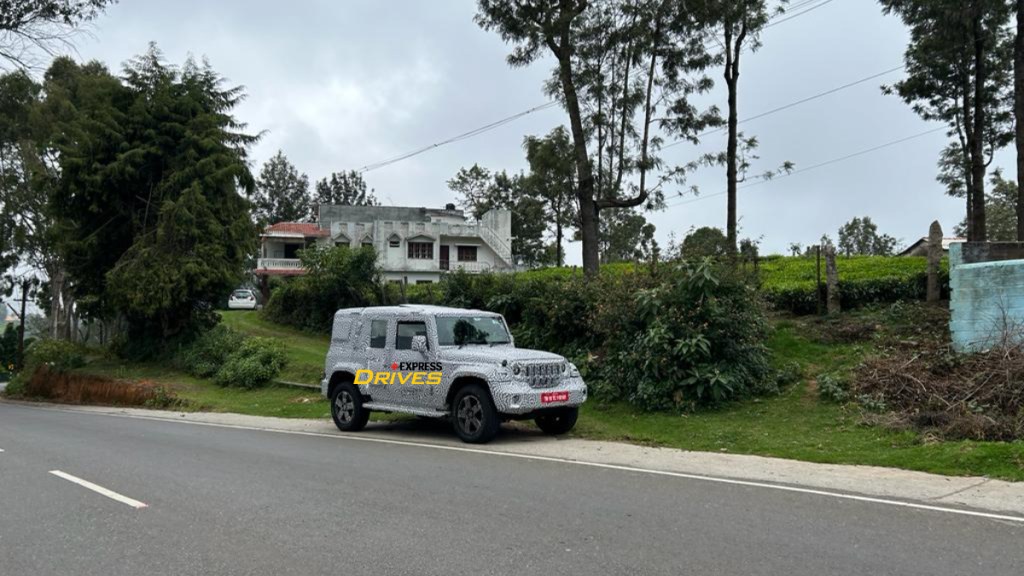After enjoying massive success with the second-gen Thar, Mahindra is now working on a bigger, 5-door Thar. Test mules of the larger Thar have been spotted on numerous occasions over the past eighteen months ever since it was announced. While the current Thar is a beast in off-roading conditions, it is not as practical as a family car should be.
Hence, a larger 5-door version of the SUV comes into play. A prototype of the bigger Thar was recently caught on camera testing in and around Ooty. The latest set of spy shots indicate a few subtle yet critical changes.
5-door Mahindra Thar: Expected design changes
The spy images reveal a slightly different design for the front grille in the 5-door Thar. The front bumper appears to be reprofiled housing halogen fog lamps. Further, the grille is likely to be flanked by projector LED headlamps instead of traditional bulb units as in the 3-door Thar. Overall, the boxy profile remains intact but the length and wheelbase are surely longer than the current Thar.

Besides, design for the alloy wheels is expected to be different for the 5-door model. Previous spy images have revealed a reworked rear profile featuring a new set of taillamps.
5-door Mahindra Thar: Expected Features
In all probability, the 5-door Mahindra Thar is expected to offer the same set of features as its smaller sibling. This includes touchscreen infotainment system, Android Auto and Apple CarPlay connectivity, roof-mounted speakers, a digital driver’s display, and steering-mounted controls. A single-pane electric sunroof could be the biggest addition. Safety features will include traction control, six airbags, tyre pressure monitoring system, and electronic stability control.

5-door Mahindra Thar: Expected engine specs
The 5-door Mahindra Thar will receive the same engine options as the current three-door Thar— a 2.0-litre mStallion turbo petrol unit and a 2.2-litre mHawk diesel unit. However, their state of tune is expected to differ from the 3-door Thar. Both engine options will come with a 4×4 drivetrain with a low-range transfer case as standard.
The diesel powertrain is expected to benefit from brake locking differential. Transmission duties will be carried out either by a 6-speed manual or a 6-speed torque converter automatic gearbox in both the engines.



















